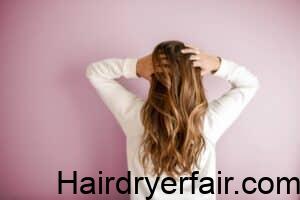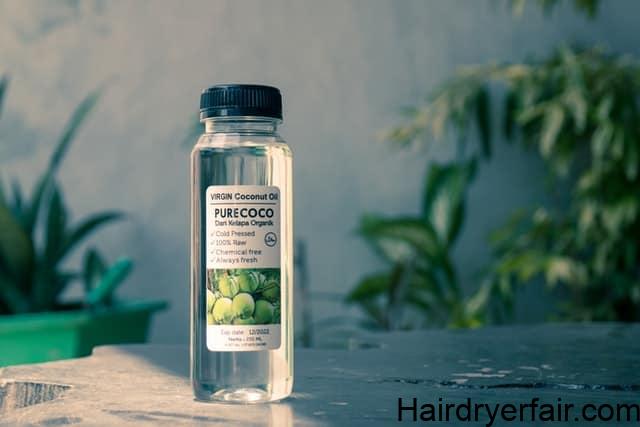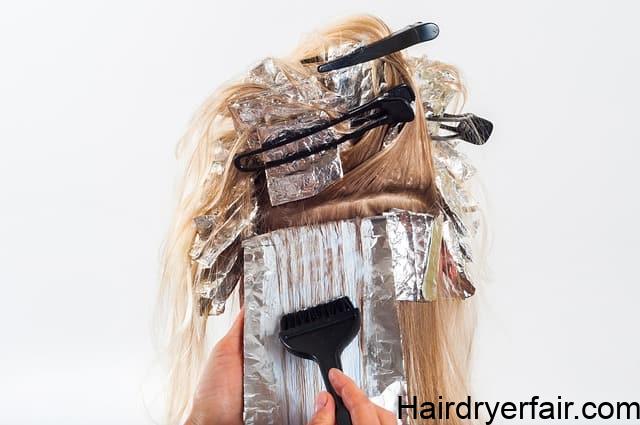We always want to pick a good hair dye suitable for our hair, whether we color our hair to cover the grays or just to change our look. However, one of the most common issues that most hair-colored individuals struggle with is scalp flaking after coloring their hair, which is also one of the reasons why most people are turning away from coloring their hair.
In this blog post, we will reveal some of the important things that you should know before subjecting yourself to the hair dyeing process. Aside from that, we also have here some of the helpful tips that you can do to eradicate flaky scalps. So, continue reading to the end if you are among those who have a flaky scalp due to applying hair dye.
Things to Know about Scalp Flaking after Coloring Hair

Some people are experiencing scalp flaking after coloring their hair. The most probable reason for this is a dry scalp after a hair coloring treatment. Please take note that this is not normal. Yet, there are plenty of reasons behind the scalp flaking after coloring hair.
Primarily, this is due to the going down of hair colors deep into the roots of the tresses. With that, the hair colorants can have a direct effect on the scalp. Moreover, the pore openings within the strands will get clogged, which will eventually hinder the production of natural oils.
So, before you dig into coloring your hair, take a look at the following important things for consideration:
1-Hair dye has the potential to burn the scalp
The hair dye has all the potential to cause a burning sensation on the scalp. The reason behind this is the mechanism of action of most hair dyes. This hair product does not act to cover the previous hair color with a new, different color. What they do is strip off the natural pigment of the hair with chemicals.
The major chemical in most hair dyes is peroxide, which causes real damage to the skin or scalp. Most likely, this applies once the hair dye is left on the scalp for a long time. Although the color left on the scalp is synthetic, the stripping process is still responsible for causing scalp flaking after coloring hair.
2: Different scalps have distinct reactions
Most of the ingredients contained in the hair dyes may cause allergic reactions in some people. This is why scalp flaking after coloring hair occurs. Purified protein derivative, or PPD, is another ingredient in hair dyes that is also a common allergen. From a seriously flaky, itchy scalp to extremely severe problems like swelling of the feet and overall body irritation, the range of reactions to PPD is broad.
It might probably be due to allergies if you are suffering from mild but constant irritations after every hair dye application. It is generally advisable to be very cautious about the hair dye contents you are using. That way, you can clearly understand the ingredients that may negatively affect your scalp, causing it to flake out.
3-Hair dye causes dry and frizzy hair
Another undesirable effect of hair dye application is that it makes the hair follicles more porous. Although this means that they can absorb moisture, they also release the said moisture as soon as they can. So, it is highly possible that stripping out moisture from the hair is responsible for frizzy hair and a flaky scalp after hair coloring.
So, if moisture is out, the best solution is to incorporate more moisture into your mane. And it’s good to know that there are several options to select from in terms of hair moisture restoration and maintaining the health of the hair-colored scalp.
4-Scalp flaking after coloring hair—is it dandruff?
When there is scalp flaking, people automatically think that is dandruff. However, for some time it may be true due to the product build-up. Generally, flakes from dandruff appear thick and heavy. This can be a combination of the skin, products, and oils.
On the other hand, flakes from a dry scalp tend to be lighter. The usual cause of this scalp phenomenon is the stripping of nutrients and moisture from the hair and scalp. It is highly crucial to know this, especially when you decide to treat it.
Keep in mind that dandruff shampoos and other specialized hair treatments may not respond positively if you are dealing with scalp flaking after coloring hair.
THE RELATIONSHIP OF HAIR DYE AND DANDRUFF
Since scalp flaking and dandruff closely resemble each other, many people interchangeably mistake one for the other. So, to help us get through this issue, let us try to define first what dandruff is.
Malassezia globosa is the causative agent of dandruff, and it is a microorganism that resides in the human scalp. It lives there through its survival process from the natural oils present in the scalp. And it is good to know that this microorganism is generally harmless. However, some people are sensitive to its presence, resulting in the display of its signs.
The truth is that dandruff may not occur from the application of hair dyes. But, in case you are susceptible to having dandruff, chances are that hair dyeing may trigger a dandruff flare-up. Initially, once you apply hair colors, the chemicals in this hair product take off the lipids or oils that act as barriers on the scalp. It will now become exposed and prone to damage caused by irritants such as Malassezia globosa, which will tend to develop dandruff.
Another thing is that the chemical content inside the hair dyes is a strong irritant. This is so true if the scalp is weak enough because of the presence of dandruff. Because of that, symptoms of contact dermatitis may occur, which are as follows:
- Itching of the scalp
- Stinging sensation
- Swollen or red patches
Ways to Manage Scalp Flaking after Coloring Hair
Flakes on the scalp, whether they are due to dandruff or hair dyeing, are really frustrating. So, to help you eliminate its presence, especially if you finished your hair coloring session in the salon, try to consider the following strategies:.
1. Gently wash the hair
If you observe a flaking scalp after hair coloring, you should wash the hair and the scalp thoroughly and gently. Hair dyeing may generally produce residues in the scalp that cannot be completely washed out, leading to scalp irritation. Look for a gentle shampoo that is highly formulated for color-treated hair.
Aside from that, there are plenty of advantages when you use color-safe shampoos. These include the following:
- I can’t strip off the color of the hair
- Free from any harmful chemicals
- 100% organic
- Incorporate moisture
- Make the hair color more vibrant-looking while revitalizing the scalp
2. Don’t forget to hydrate the hair
Since the drying process causes scalp dryness, it is generally helpful to boost the shampoo with the use of some conditioner. This way, you can generally help with the hydration of the scalp. Moreover, scalp dryness that is not due to allergic reactions may respond well to the application of a hair oil treatment.
The best example of these oil scalp treatments is Moroccan oil, in which massaging just a few tablespoons of it into the scalp is such a great help. Allow the oil to sit on the hair and scalp to take in the moisture. Wash it out after a few hours.
3: Apply coconut oil to a flaky scalp

Among the other great oil treatments for scalp flaking after coloring hair, coconut oil is one of the most effective. Well, this natural moisturizer brings back moisture to the scalp and tresses. But it’s not as simple as that; coconut oil can lock in the moisture inside. The good thing is that this oil is sufficiently heavy to seal in moisture while not getting to greasy on the hair. Through that, the hair will not become oily.
Battling against itching and redness is another function of coconut oil. These two symptoms actually come together, along with dry scalp. The application of coconut oil is generally a lifesaver. So, why not consider applying some coconut oil when you have a flaky scalp after coloring your hair?
4. Use tea tree oil to combat flaking
Aside from Moroccan oil and coconut oil, tea tree oil is another safe method for treating the dryness of the scalp after hair dyeing. Generally, this natural oil offers the required moisture to battle against dryness and a flaky scalp. One of its excellent properties is its anti-inflammatory effect, which is also beneficial for those who are experiencing pain and itching because of scalp dryness. It actually provides a soothing sensation to the flaky scalp.
Another aspect in which tea tree oil is highly beneficial is getting rid of dead skin cells. At the same time, it also permits the creation of a new environment for the growth of healthy cells. You just need to incorporate some drops of this natural oil directly into your favorite shampoo. That way, you can alter the effectiveness of the hair product. A healthy and moisturized scalp with reduced flaking is highly noticeable.
5: Keep away from heat

Once your scalp is already getting flaky right after hair coloring treatment, prevent any heat styling method as much as possible. If you can, do not apply direct heat coming from a flat iron or blow dryer. It is actually helpful to prevent hair damage when you opt to avoid or at least apply less heat to your strands.
6: Give your hair more time
After hair dyeing, dryness, scalp flakiness, and itchiness are commonly expected. Keep in mind that these things always go hand-in-hand with hair coloring treatments. Moreover, always remember that the hair and scalp take a specific time to heal themselves right after the hair dyeing process.
Generally, these negative responses to the scalp from hair dyes may take five to seven days to cure naturally. In case the symptoms don’t go away after these five to seven days of healing, it is always better to check with and consult a dermatologist. They may be the right ones to tell you that you have an allergic reaction to hair dyes or that you have already acquired scalp dermatitis.
How to Avoid the Occurrence of Flaky Scalp
Once you have already treated the flakiness of the scalp after your hair dyeing treatment, it is the best option to prevent it from coming back or occurring in your next hair coloring session. Well, they always say that prevention is always better than cure. So, from here, you can generally consider doing those things that can help in the occurrence or reoccurrence of a flaky scalp.
Some hair stylists generally advise clients to visit the salon with their hair unwashed. With that, a barrier in the middle of the hair dye ingredients and the skin on the scalp will create oils or sebum. This may tend to be a helpful strategy to ward off the scalp flaking after coloring hair. However, for some time, this has not been as reliable as it once was.
Discuss everything with the hair colorist
One of the keys here is to tell everything to your hair colorist. As much as possible, let the colorist know your negative response to hair dyes. With that, they can assess what’s good for you inside their tool kit. Some hair dyes contain ingredients with pH-buffering properties. They generally neutralize the ammonia so that the hair dye will produce less scalp irritation.
Request for a patch test
This is actually the primary and most important step that you should take before jumping into a hair dyeing session. It is essential to undergo a patch test a few days or so before coloring your hair. With that, you will be able to determine the possible reaction of your skin to the hair dye before its complete application over the whole scalp.
Moreover, some hair colorist experts suggest taking Benadryl before coloring the hair. This is highly suitable for those who are irritated with their hair color, especially the platinum shade.
Make a salon research
If you already have an idea that you have sensitivity to artificial hair dyes, it is a better solution to find salons that generally make use of organic hair colors. This type of hair dye is typically subtle on the scalp.
Frequently Asked Questions:
Q: WHY IS MY HEAD SO ITCHY AFTER DYING MY HAIR?
A: Basically, this is due to the skin reactions to the ingredients of the hair dye. Hair dyes generally contain harmful chemicals that are usually irritating to the scalp. This is more likely to happen if the individual has sensitivity to hair colors. Once the hair dye stays too long on the scalp, the chemical contents of the hair dye may actually cause a burn to the scalp, making it itchy afterwards.
Q: HOW DO I PROTECT MY SCALP WHEN DYING MY HAIR?
A: The best way to protect the scalp during a hair coloring session is by putting on some petroleum jelly like Vaseline. Basically, apply the jelly to the forehead, ears, and neck. You can also put some of the petroleum jelly into the body areas that have the potential to be exposed to the dye. Doing so may help in getting the chemicals to irritate the sensitive areas surrounding the scalp.
Q: DOES HAIR DYE AFFECT HAIR TEXTURE?
Another major cause of hair dye application to the hair is the alteration of the hair strand texture. For instance, coarse hair does not contain a smooth cuticle that may be roughened more once you apply hair dye to it. And, every time you apply hair color, the damage will generally get worse. The tresses will be dryer and frizzier.
Final Thoughts
Although beneficial for aesthetic purposes, hair coloring is not always a healthy idea for the scalp. But if you ever pick a 100% natural or organic hair dye, you may reduce the possibility of having a flaky scalp after the hair dyeing process. The key here is to always consider the way hair colors may affect your scalp, either on a positive or negative note. Moreover, it is also important not to ignore the proper ways to eliminate flaky scalps after this hair-coloring process. It’s good that there are lots of ways to get rid of those flakes once you apply hair dye. That way, you can deal with the dryness and itchiness of the scalp immediately. Be very vigilant, especially when choosing the appropriate hair dye for you. Also, keep an eye on any potential negative reactions of the dyes to your scalp. This way, you will keep those bad hair days away!

